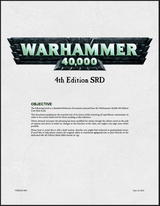Search Results
6/16/2025, 9:26:59 PM
>>95881068
>>95882944
>>95882800
Alright it looks like I'm just in time then. I want to suggest using git and github as a version control for the project, so conflicts like this don't happen. Git also serves as a handy change log / version history, but most importantly it makes it very easy for multiple authors to see exactly what changed.
>git, a version control tool, can be used by yourself or with a online repo
>github, a online repo that you use git with.
I wanted to teach myself some new tricks and I thought this would be the perfect time to try; I have never used github before so this will be a bit new for all of us, but I use git locally on my own projects a lot and its great and Im willing to learn and teach a bit. There is only one caveat, and I do not want to step on the incredible work done so far by the two anons working on the page design, but git will offer no value at all if you don't use plaintext files since it cannot manage proprietary binary files. Is this possible with the affinity workflow? It seems to me like all the text is stored in one big .afpub file, but maybe they can be broke out? For git (or any version control) to be of value and work we need a data structure that contains the text, and then a template file where you "turn the crank" and out comes the pdf.
So because it's what I know, I have re-created the last posted template in latex as an example to show-off using git, as well as a few of the first pages for an example. You can see how each piece of the project is a separate plain text file, so when it changes the exact line edits are visible on github.
You can check out what Ive got so far here which has a partially done pdf, just remove the space as usual.
https://git hub.com/pepsi41999/4ebattlebible.git
>>95882944
>>95882800
Alright it looks like I'm just in time then. I want to suggest using git and github as a version control for the project, so conflicts like this don't happen. Git also serves as a handy change log / version history, but most importantly it makes it very easy for multiple authors to see exactly what changed.
>git, a version control tool, can be used by yourself or with a online repo
>github, a online repo that you use git with.
I wanted to teach myself some new tricks and I thought this would be the perfect time to try; I have never used github before so this will be a bit new for all of us, but I use git locally on my own projects a lot and its great and Im willing to learn and teach a bit. There is only one caveat, and I do not want to step on the incredible work done so far by the two anons working on the page design, but git will offer no value at all if you don't use plaintext files since it cannot manage proprietary binary files. Is this possible with the affinity workflow? It seems to me like all the text is stored in one big .afpub file, but maybe they can be broke out? For git (or any version control) to be of value and work we need a data structure that contains the text, and then a template file where you "turn the crank" and out comes the pdf.
So because it's what I know, I have re-created the last posted template in latex as an example to show-off using git, as well as a few of the first pages for an example. You can see how each piece of the project is a separate plain text file, so when it changes the exact line edits are visible on github.
You can check out what Ive got so far here which has a partially done pdf, just remove the space as usual.
https://git hub.com/pepsi41999/4ebattlebible.git
Page 1
